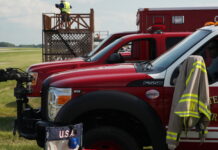In the summer of 2015, a group of air show performers were discussing a topic that had not been very extensively discussed at ICAS or within the air show community. That topic was “margins.” So, during the subsequent two years, ICAS has given this important topic much more attention.
What are margins and why are they relevant to the air show industry? Simply put, margins in the air show environment refer to the buffer area that performers give themselves to safely recover from a maneuver.
Hypothetically, a performer has practiced a torque roll enough times to insure that the maximum altitude lost while sliding backwards is 400 feet, that the maximum altitude required to reestablish control is 400 feet and that the pullout takes a maximum of 600 feet. The performer will then set a minimum altitude for the torque roll at 1,800 feet, giving a 400 foot margin to eat into in the event of an unforeseen complication in the maneuver (400 foot slide + 400 feet to reestablish control + 600 feet to pull out + 400 foot margin = 1,800 feet). Using this same example, a performer who set a minimum altitude for the torque roll of 1,400 feet would effectively be giving himself/herself no margin at all.
Obviously, margins are unique to each aircraft and can differ not just from aircraft to aircraft, but from maneuver to maneuver for a particular pilot.
Allotted margins are important to identify because they require a second level knowledge of the maneuvers being performed. Not only must performers know how to correctly execute their maneuvers, but they must also be familiar with any possible deterioration to which the maneuver may be susceptible. This intimate familiarity with each maneuver is only gained through repetition and practice.
Flying without properly identifying your margins can be compared to driving down the interstate without wearing a seatbelt. Under perfect circumstances, there would never be a problem; however, when flying in an environment with as many variables as the air show box, operating without set margins is simply a bad idea.
Have you identified the margins for each maneuver in your performance sequence?








